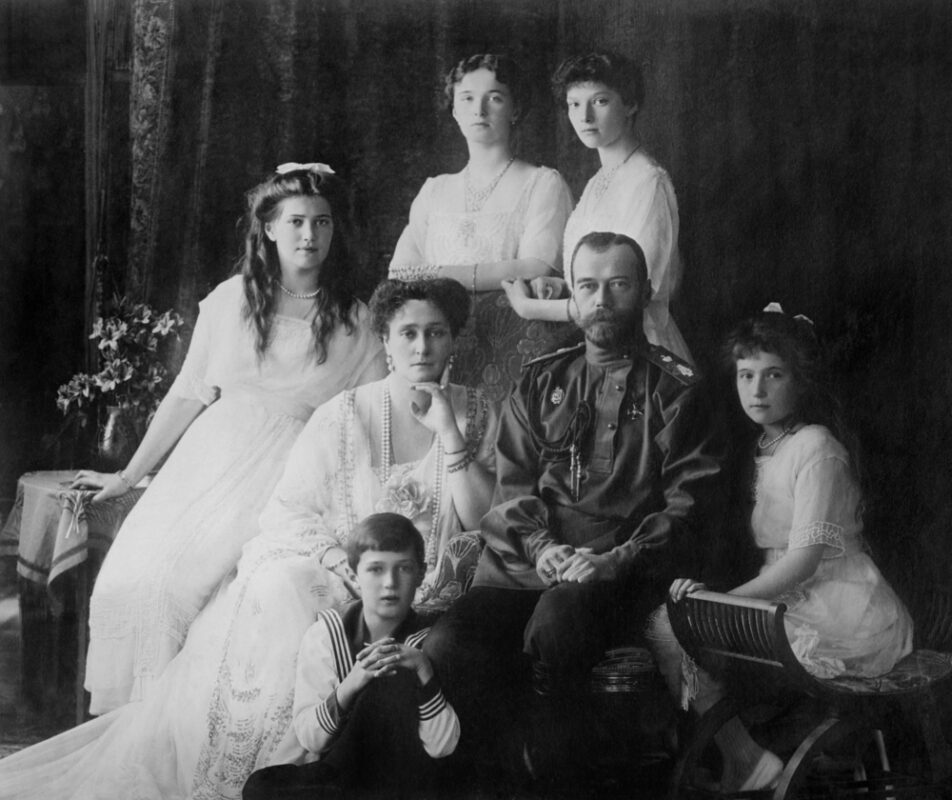Did you know about all the royal genetic disorders in monarchies?
The act of marrying a biological relative has been a mainstay of royal families for about as long as dynasties have been around.
On paper, the concept might make sense: marry a relative, keep the bloodline entirely pure by having children from consanguineous marriages, and, if a conflict should arise within the family, have the clashing parties get married. What could possibly go wrong, right?
Well, a whole lot, actually. As we’ve learned, due to the modern science of genetics and the hindsight of so many disasters, inbreeding has led to many royal genetic disorders, some so severe that entire dynasties were obliterated.
Considering that children in royal families had much higher mortality rates than the general population, being royalty wasn’t always all that it was cracked up to be. Keep reading to discover what royal genetic disorders appeared in these 5 famously inbred monarchs.
This list will make you grateful that you aren’t a king or queen!

Queen Victoria
Let’s begin with a monarch who may have caused Europe’s most royal genetic disorders. The sad truth is that much of the nineteenth and twentieth-century European royalty could be linked to Queen Victoria in one way or another.
Her daughter, Princess Alice, was the mother of Tsarina Alexandra Romanov, grandmother of the last Viceroy of India, and great-grandmother of the Duke of Edinburgh. Victoria’s genes were spread all over the continent.
Her husband, Prince Albert, was her first cousin, meaning all her kids likely had some kind of royal genetic disorder. She also had the blood-clotting disorder hemophilia, which she gave her children before it spread through European royalty.
She herself may not have suffered significantly from the disease. But one of her children and five of her grandchildren died from its complications. Hemophilia is caused by both parents having the recessive gene for it.
Queen Victoria was a unique subtype known as Haemophilia B. Questions have been raised about whether Edward, the Duke of Kent, was her biological father. Prince Albert and Victoria had to have both had hemophilia to pass on to their children.
So for such a rare, recessive royal genetic disorder to be so strongly present among cousins, there’s the belief that the queen herself may have been the product of inbreeding.
Joanna of Castile
Joanna of Castile was the older sister of Catherine of Aragon. She was from the house of Trastamara, which had been engaging in marriages to cousins for centuries. Even her own parents, King Ferdinand, and Queen Isabella, happened to be second cousins.
Experts suspect that the family’s long tradition of inbreeding may have been at least partially the reason for Catherine not being able to bear children. Joanna set the stage for her descendants to have royal genetic disorders because she married into the Habsburg line.
She was known to be curious, intelligent, and somewhat moody in her youth. At age 16, she entered into an arranged marriage with the son of the Holy Roman Emperor, Philip the Handsome.
He was also the product of a royal genetic disorder and was well-known as a philanderer. But Joanna was utterly smitten with him.
When she ascended the throne, due to the unpredicted deaths of her older siblings, she had a complete mental breakdown, heightened by Philip’s behavior towards her. When she discovered one of his mistresses, she went ballistic and stabbed her in the face.
Despite this, she remained madly in love with her husband. When he unexpectedly died, she wouldn’t leave his corpse and slept beside it every night. History remembers her as Juana la Loca, a.k.a. Joanna the Crazy.

Alexei Romanov
As we mentioned in the beginning, Alexei Romanov, the grandson of Queen Victoria, got the “royal genetic disorder” inherited by a disproportionately significant number of European royals: hemophilia.
His recurring bouts of bleeding were so life-threatening that his mother, Tsarina Alexandra, looked for help from the legendary Rasputin.
Rasputin went on to gain an unmanageable amount of influence over the royal court in his efforts to save Alexei from the most severe effects of his royal genetic disorder. Tsar Nicholas and his wife were certain that his treatments were healing their son.
But aristocrats and other individuals close to the royal family weren’t quite so convinced. Rasputin’s nature was tainted with promiscuity and alcoholism, as well as dabblings in the occult.
Whether or not he was guilty of those things, to the Russian people as well as the aristocracy, he represented everything that was wrong with the royal family. Chaos and dissatisfaction grew, and in 1917, the Russian Revolution began.
We can’t know for sure if Alexei’s royal genetic disorder could be considered a critical factor in the Russian Revolution, the fall of the Romanovs, and the execution of the royal family. But it certainly didn’t help.
King James I
James of Scotland was merely one year old when he was crowned King in 1566. When the childless Queen Elizabeth died, he took the English crown and was known as King James I of England. Until the age of five, James struggled walking by himself.
He possibly had a hereditary neuromuscular disease since he shared his feeble, thin legs with his father and one of his sons. This royal genetic disorder, porphyria, manifested in some of his offspring, and James had all the symptoms.
Fever, stomach irritation, and pain, during which his urine was wine-dark, were all common symptoms of porphyria. This disease occurred in episodes, two of which his physician recorded in 1613 and then again in 1615.
Insanity was also a sign of his royal genetic disorder, which he arguably displayed plenty of. When hunting, King James would rip open a deer’s belly and put his feet and hands inside the animal before slathering its blood all over the rest of his hunting party.
Later, in his golden years, James had severe arthritis, became stick-thin, and had sores inside his mouth. His mental issues were now permanent from an early onset of dementia that was likely caused by several small strokes.
He was like a child, couldn’t remember people, and wasn’t capable of making royal decisions. He died in 1625 amid symptoms of porphyria and an inability to swallow or talk.

King Richard III
The missing remains of Richard III were found in a Leicester parking a few years ago. The skeleton even matched many historical references.
The horrendous wounds that marred the bones sustained that he was the last English King to die in combat, and spinal anomalies confirmed that he was disabled.
After examining the King’s spine and vertebrae, markedly distorted with a deep curvature, it was found that King Richard had a royal genetic disorder known as idiopathic adolescent-onset scoliosis.
It was most likely advanced, beginning in his teens and heightening as he grew older. Throughout his life, his left shoulder was much lower than the right, and due to the pressure scoliosis exerts on his lungs, he would’ve also suffered from breathing difficulties.
The deformity also made him much shorter than the 5-foot-8-inch stature he would’ve had if he had been in optimal health. There were no signs of some of the other malformations some stories attribute to this King.
For those who don’t know, he was born in 1452 and, being the 12th in line, was unlikely to reach the throne. But Richard was crowned after the dubious disappearance of his 12-year-old nephew, King Edward V, and his younger brother.
He only got to run for two years before dying in 1485 during the Wars of the Roses, fighting against Henry Tudor. He was buried without ceremony or coffin, and the grave was poorly dug and small. By the looks of it, his hands might have also been tied.
He was buried at the church at Greyfriars, but his grave disappeared when Henry VIII dissolved the monasteries. The University of Leicester has recently matched the DNA to living descendants, and the forgotten King was reburied in Leicester Cathedral.
The history behind this lost King is very well explained in the book: “The Wars of the Roses: The Fall of the Plantagenets and the Rise of the Tudors“
Be sure to share your thoughts on all these royal genetic disorders in the comment section. And in the meantime, we also recommend your read: Leonardo da Vinci’s Secret Life: 7 Astonishing Discoveries REVEALED








